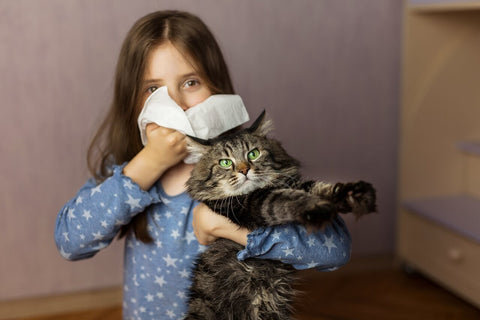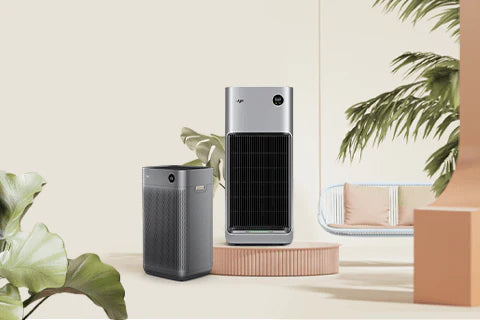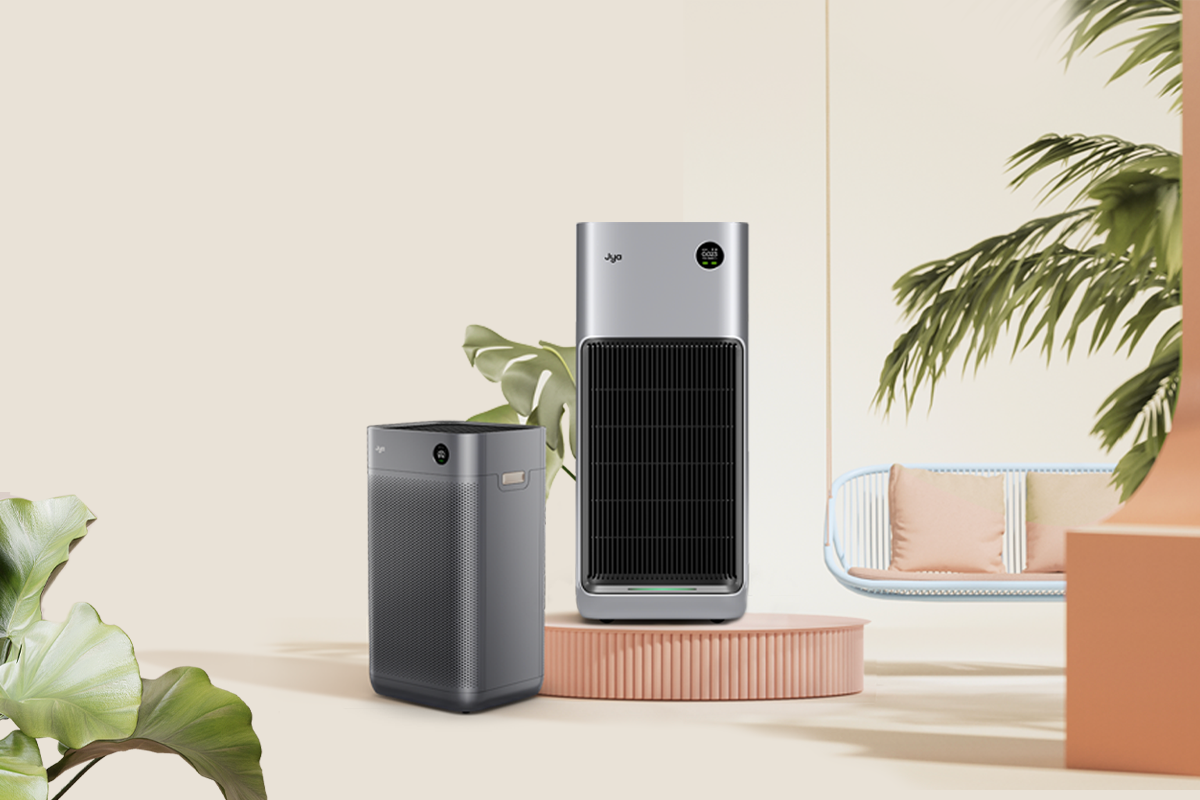Allergic to pets? Here’s how to live comfortably alongside your four-legged family members.
If you’re an animal lover, you aren’t alone. Pet ownership in the United States has nearly doubled since 1990, jumping over 10% during the COVID-19 pandemic alone. And it’s not surprising. Studies show that having a dog or cat in your home can lower stress and feelings of loneliness, even lowering the risk of high blood pressure. But as many already know, there can be a very serious problem: while pet ownership is on the rise, animal allergies are as well. It’s estimated that 10-20% of the global population is affected by pet allergies, and that number continues to increase with the growing number of pet owners.
If you or someone in your family suffers from these allergies, it might feel like adding a pet to your family simply isn’t an option. However, there are steps you can take to minimize the negative symptoms of dog and cat allergies.
What causes pet allergies?

The short answer: pet allergies result from a negative immune response (allergic rhinitis) to animal proteins. The actual answer is a bit longer, though, as various proteins are found in household pets’ dander, hair, saliva, and urine. While direct contact with these allergens can certainly cause an uncomfortable response, the bigger problem is that these irritants become airborne (and can linger in indoor air for hours at a time). Even if you avoid direct contact, microscopic particles floating throughout your home, consisting of animal hair, dander, and even dried saliva and feces, can trigger unpleasant indoor allergies.
There’s a secondary problem caused by indoor pets, too: their fur is ideal for trapping dust, pollen, mold spores, and other outdoor allergens. They can bring these particulates into your home and disperse them into your household air, which amplifies the allergic response for those with multiple allergies.
How do I know if I suffer from a pet allergy?

Only your doctor can answer that question with 100% certainty. Sometimes, seasonal allergies or common cold can be mistaken for a pet allergy, because the symptoms are similar:
- Sneezing or a runny nose
- Coughing
- Postnasal drip
- Tightness in the chest
- Breathing problems
- Wheezing
- Eyes that are watery, red, or itchy
- Hives or a rash on the skin
Your doctor can run various allergen tests, including skin reaction tests and blood tests, that identify the presence of particular IgE antibodies. These tests can provide specific information about your allergies to foods, pollens, mites, animals, insects, and other environmental factors.
However, if you have a noticeable allergic response when you come in contact with household pets, there’s a good chance you would benefit from minimizing exposure to these airborne irritants.
Is there a solution?

While many pet owners with allergies simply accept the negative effects of allergies and pop antihistamines, there are ways to dramatically decrease, or even eliminate pet allergy symptoms. The first step is to clean your home regularly, especially the areas frequented by your pets. Over time, hair, dander, and other pet allergens settle on the floor, on the carpet, and on furniture. When disturbed, these substances become airborne and trigger the allergic response. Vacuuming and shampooing these areas regularly will go a long way to minimize allergy symptoms.
Outside of cleaning surfaces, it’s important to clean the air in your home, as airborne irritants are the primary source of pet allergies. The right air purifier will filter a vast majority of animal dander, hair, and other pet-produced allergens out of the air, so you don’t have to breathe them in. Studies show that air purifiers have a dramatic effect in alleviated allergy symptoms in the home, and that includes pet allergies.
The best air purifier for pets
The Jya Fjord Series are the most advanced purifiers we’ve ever made, and they’ve been designed from the ground up for pet owners. Here’s how:
Many air purifiers advertise HEPA filtration technology, but when it comes to fighting pet allergies, not all HEPA filters are effective. Using the latest technology equivalent to HEPA 13., Jya Fjord Series air purifiers filter pollutants as small as 0.1 microns in size. This is important because airborne pet dander and microscopic pet hair particles can be as small as 0.1 to 0.3 microns in size. Other air purifiers with lower grades of HEPA technology can miss these particles completely, as they will simply pass through the filter uncaptured.
Before air ever reaches the internal NanoGuard™ filter, equivalent to HEPA 13, in the Jya Fjord Series air purifier, it passes through a powerful carbon pre-filter. This initial stage of cleaning removes large airborne irritants like pet hair from the air, and it also neutralizes unpleasant pet odors. The result of this multi-stage purification process? 99.99% of particles over 0.1 microns in size are removed from the air you breathe, in minutes.
If the concentration of pet allergens increases in your home, your Jya Fjord Series air purifier can help you solve the problem. Advanced environmental sensors (PM particulates, TVOCs, and humidity) monitor indoor air quality in real time, automatically adjusting cleaning intensity to maximize indoor air quality (while remaining whisper quiet).
If you want to control your Jya Fjord Series manually, simply use the smart OLED touch display to manage settings and monitor air quality data. Oh, and it works natively with your smarthome, too. Compatible with all three major smart devices and virtual assistants (Amazon Alexa, Google Home, and Apple Homekit), the Jya Fjord Pro lets you monitor and control your air quality, your way.




